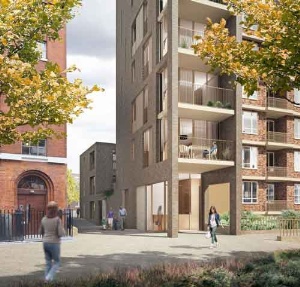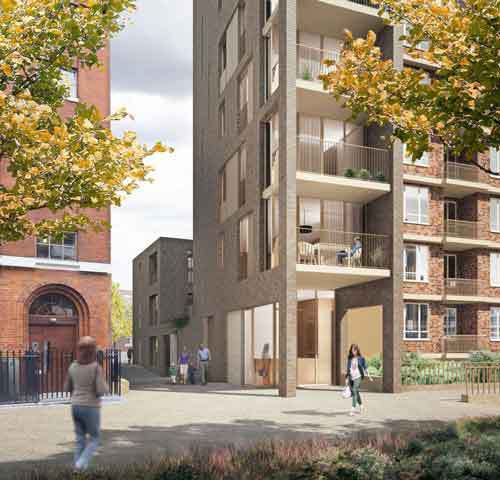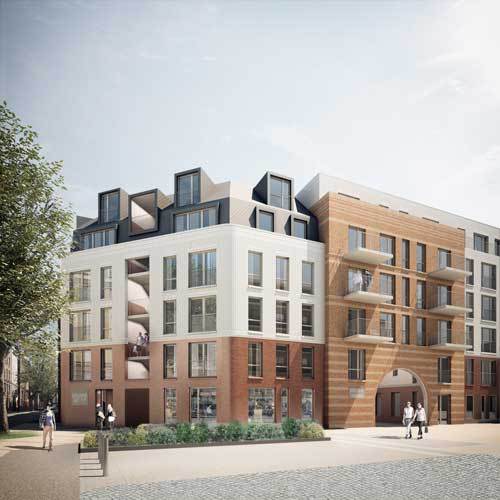Quality streets
Councils looking to get back into house building must bear in mind the importance of good design, says Hilary Satchwell
With recent funding cuts forcing local authorities to look again at affordable housing provision, central London authorities are looking at direct development of new homes as an innovative way of improving their housing estates.
Central to this approach is an emphasis on high quality design. Not just to improve the estates’ aesthetics, but to tackle a range of other important issues: better integrating the estates with their surroundings, creating more family homes on the existing footprint, increasing the amount of public realm, improving community spaces and helping make sure that new homes are low maintenance and fit for purpose for many years to come.

Bourne Estate
Tibbalds Planning and Urban Design is leading the design team for two projects, appointed under the Homes and Communities Agency’s multidisciplinary framework to minimise and simplify the procurement process. Both schemes deliver high quality new homes with minimal demolition and will make a real difference to quality of life for existing residents, as well as delivering a receipt to go towards the council’s community improvement plan.

Tybalds Estate
The two estates are very different in character. With 500 properties on a 1.4 ha site, the Grade II listed Bourne Estate is one of the earliest council housing estates from the early twentieth century and has influenced later social and private housing in Europe. The Tybalds Estate by contrast was built in the 1950s and 1960s and comprises 360 homes in seven slab blocks and two tower blocks across a 2.3-hectare site. Both estates are in highly sought-after central London locations, which is a considerable benefit when it comes to funding the schemes through the sale of a small proportion of private sale units.
The objectives for both, however, were to reconnect the estates with surrounding areas and to respond more sensitively to their historic contexts, while maximising the amount of affordable housing that can be delivered on each site and meeting the local community’s urgent housing needs. Between them the two schemes will deliver 168 new homes.
With one project going through planning and the other achieving consent earlier this year, these improvements are well underway. New-build blocks are being integrated with existing accommodation, public realm, play and sports facilities are being reorganised, anti-social blackspots are being addressed and routes and movement are being improved, all creating a coherent and well-structured and high quality urban form and reintroducing active street frontages.
To help create variety and an appropriately high quality architectural response, Tibbalds has been working with four different architectural practices and two landscape practices on the two projects. All were appointed following a limited competitive process led by Tibbalds as part of its overarching design coordination role.
Undertaking development directly means that councils have direct control of the quality and can optimise the project aspirations and viability with its own long-term needs. At the same time, the focus on design will provide a number of wider benefits including reduced maintenance costs, long-life materials, reduction in anti-social behaviour, and better use of the newly organised public spaces.
Matthew Lloyd Architects and Dally Henderson are working with Tibbalds on the Bourne Estate. Avanti Architects, Duggan Morris Architects, Mae Architects and Camlins are involved in the Tybalds Estate regeneration.
Hilary Satchwell is director at Tibbalds Planning and Urban Design









